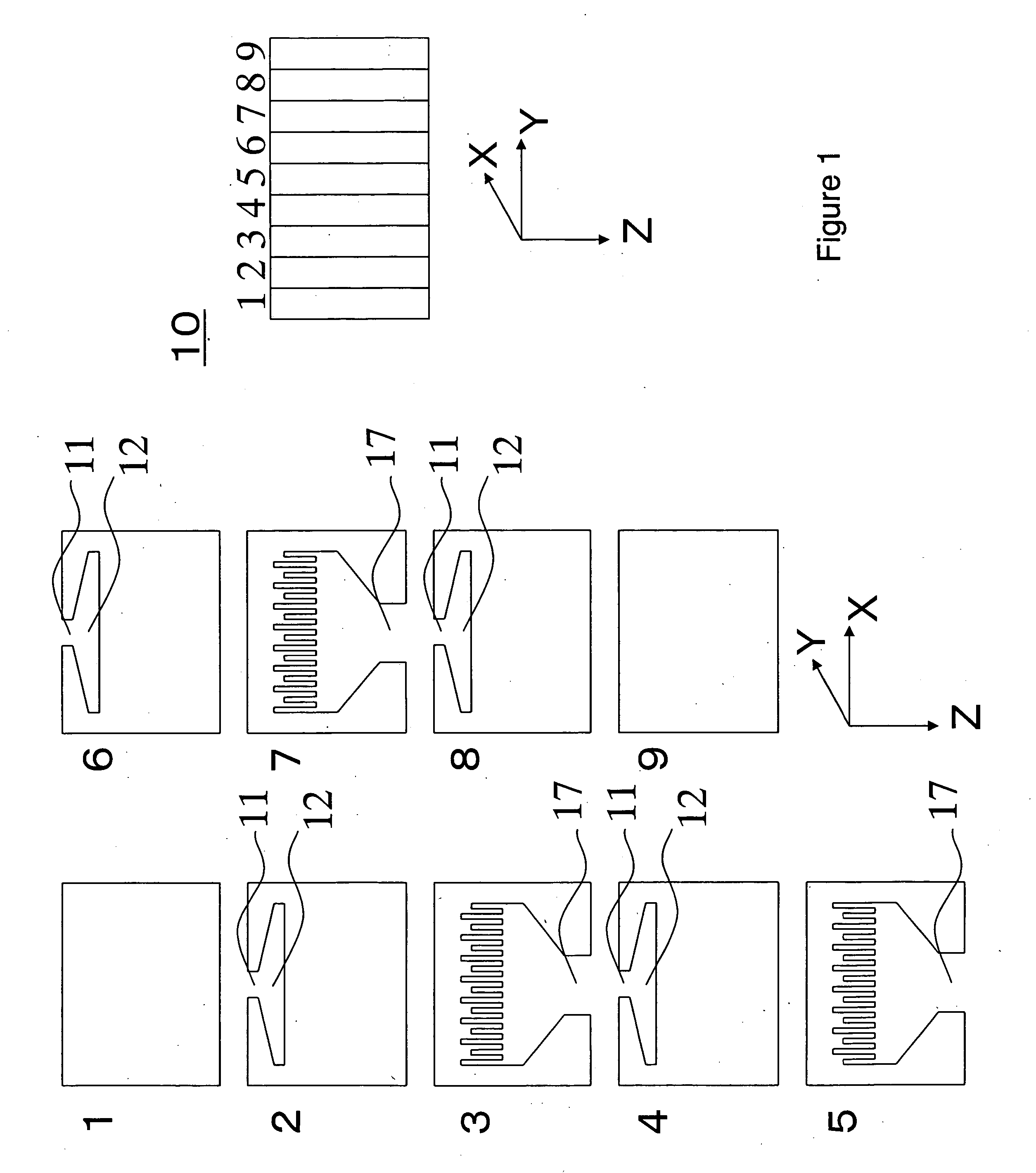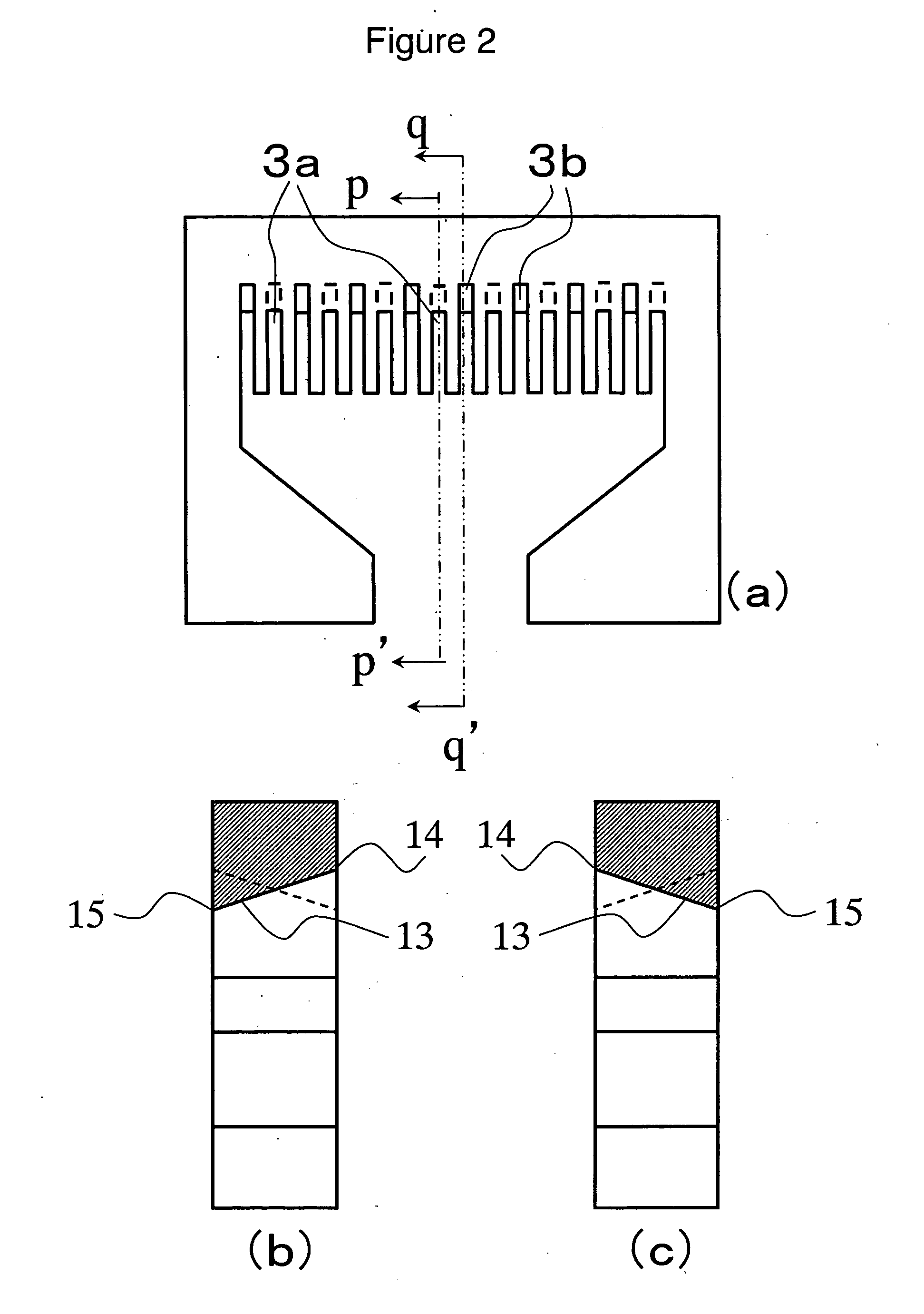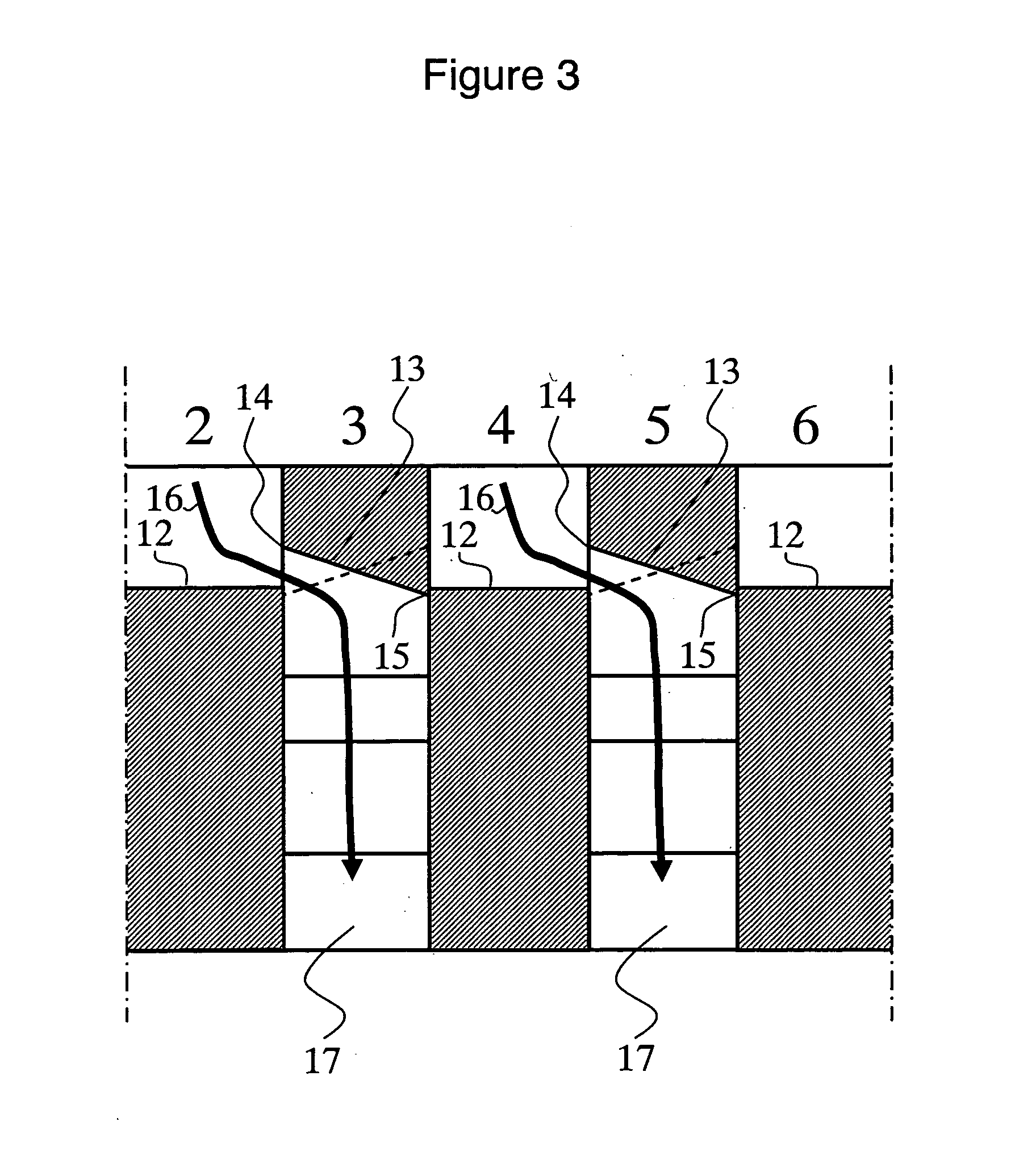Laminated film
a technology of laminate film and film layer, applied in the field of laminate film, can solve the problems of large loss of transmission, difficult to control the distribution precisely into the refractive index, unsuitable waveguide for high-speed transmission, etc., and achieve the effects of large information transmission capacity, small light attenuation, and small dispersion
- Summary
- Abstract
- Description
- Claims
- Application Information
AI Technical Summary
Benefits of technology
Problems solved by technology
Method used
Image
Examples
example 1
[0113] As two thermoplastic resins, the following were used: a thermoplastic resin X: a methacrylic resin (PMMA)
[0114] [Acrypet [transliteration], manufactured by Mitsubishi Rayon Co., Ltd.], and
a thermoplastic resin Y: a polycarbonate (PC)
[0115] [S-2000, manufactured by Mitsubishi Engineering Plastics Corp.]
[0116] These thermoplastic resins X and Y were each dried, and then the resins were separately supplied into extruders and made into a melted state at 230° C.
[0117] The melted thermoplastic resins X and Y were each passed through a gear pump and a filter, and then the resins were supplied into a feed block for the lamination of 3001 layers, as illustrated in FIG. 1. The thermoplastic resins X and Y were made into a structure wherein: the thicknesses of layers made thereof changed gradually from the sides of the surfaces toward the side of the center; and the thermoplastic resin X layers, the number of which was 1501, and the thermoplastic resin Y layers, the number of which...
example 2
[0123] A laminated film was produced in the same way as in Example 1 except that the shapes of the fine slits in the feed block were changed and the injected amounts of the thermoplastic resins X and Y were adjusted so as to set the lamination ratio (=the ratio by weight) in the whole as follows: X / Y=1.5.
[0124] The thickness of the resultant film was 45 μm.
[0125] In the two surface portions of the resultant film, the thicknesses of the thermoplastic resin X layers were each 27 nm, and those of the thermoplastic resin Y layers were each 3 nm. In the central portion thereof, the thickness of the thermoplastic resin X layer was 3 nm, and that of the thermoplastic resin Y layer was 27 nm. The thicknesses of the thermoplastic resin X layers decreased from 27 to 3 nm from the surface portions toward the central portion while the thicknesses of the thermoplastic resin Y layers increased from 3 to 27 nm from the surface portions toward the central portion. The thickness distribution of th...
example 3
[0128] The two surfaces of the film of Example 2 were coated with an amorphous fluorine-contained resin (refractive index: 1.34) manufactured by Asahi Glass Co., Ltd. as clads, and then the resin was dried. The thickness of the resultant film was 49 μm.
PUM
| Property | Measurement | Unit |
|---|---|---|
| thickness | aaaaa | aaaaa |
| refractive index | aaaaa | aaaaa |
| thickness | aaaaa | aaaaa |
Abstract
Description
Claims
Application Information
 Login to View More
Login to View More - R&D
- Intellectual Property
- Life Sciences
- Materials
- Tech Scout
- Unparalleled Data Quality
- Higher Quality Content
- 60% Fewer Hallucinations
Browse by: Latest US Patents, China's latest patents, Technical Efficacy Thesaurus, Application Domain, Technology Topic, Popular Technical Reports.
© 2025 PatSnap. All rights reserved.Legal|Privacy policy|Modern Slavery Act Transparency Statement|Sitemap|About US| Contact US: help@patsnap.com



